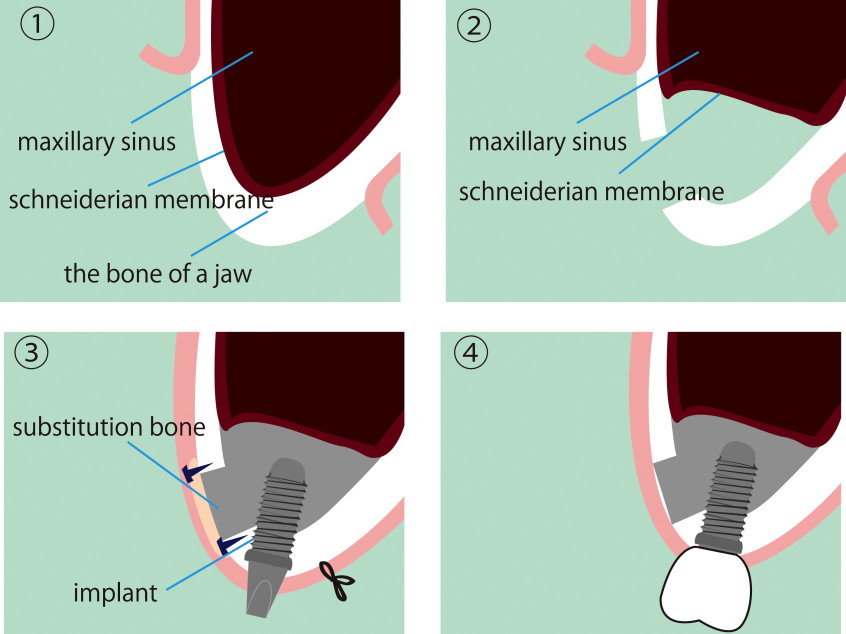When the sinuses are too close to the jaw, or there’s insufficient height in the upper jaw for dental implant placement, dental specialists sometimes perform a sinus lift. Sinus lift surgery, at times called sinus augmentation, adds bone to a patient’s upper arch (Maxilla) in the premolar and molar areas between the maxillary sinuses located on either side of the nose and the jaw. To create room for the additional bone, dental professionals move the sinus membrane upward, lifting it. Although the explanation of the procedure may sound intimidating, dentists perform this standard treatment often and with great success.
Situations that call for sinus lifts
Over the past 15 years, sinus lifts have become more common as an increasing number of people choose dental implants to replace missing teeth. Dental professionals perform sinus lifts in various situations and for many reasons, including:
- Missing teeth in upper arch and not enough bone for implant placement
- Loss of bone from periodontal disease
- Tooth loss that led to bone being absorbed back into the body after a long time
- Maxillary sinus too close to the upper arch for implant placement
Preparation and treatment
Dental specialists may use bone from the patient’s body or another source such as a cow or horse. When dentists use the patient’s actually bone, they remove it from other areas of the mouth or body such as the hip or tibia. Before the sinus lift, the dentist takes an X-ray of the sinus lift area to study the anatomy of the sinus and jaw and may use a CT scan that allows them to measure the width and height of existing bone along with the health of the sinus accurately. After placing the bone grafting material in part of the space where the sinus cavity was, the specialists closes the site with stitches and patients receive placement of implants 4-9 months later. During that time, the grafted material meshes with the bone to provide enough support for implants.
After treatment
Following a sinus lift, patients may experience swelling in the area and bleeding from the nose or mouth. Dentists advise patients not to blow their nose or sneeze forcefully during initial healing as it may cause movement in the bone grafting material and loosen stitches. To keep the inner lining of the nose wet and reduce inflammation and congestion, dental professionals may give patients saline sprays and prescribe medications. Patients receive antibiotics, antimicrobial mouthwash and pain medication to help the healing process and a majority experience only minor discomfort following the procedure.
After 7-10 days, patients return to the dental office for evaluation of the surgical site and stitch removal if necessary. Additional follow-up appointments may be schedule to ensure that everything is healing properly. Some dentists now use proteins called growth factors during sinus lifts to aid in the faster hardening of new bone and to stimulate bone formation without grafting, and this can alter the length of healing time.
If you’re considering implants and have been told that you need a sinus lift, there’s no reason to worry or feel anxious as this is a common procedure. Contact Greater Baltimore Prosthodontics for answers to all your questions about dental implants and other tooth replacement options.

